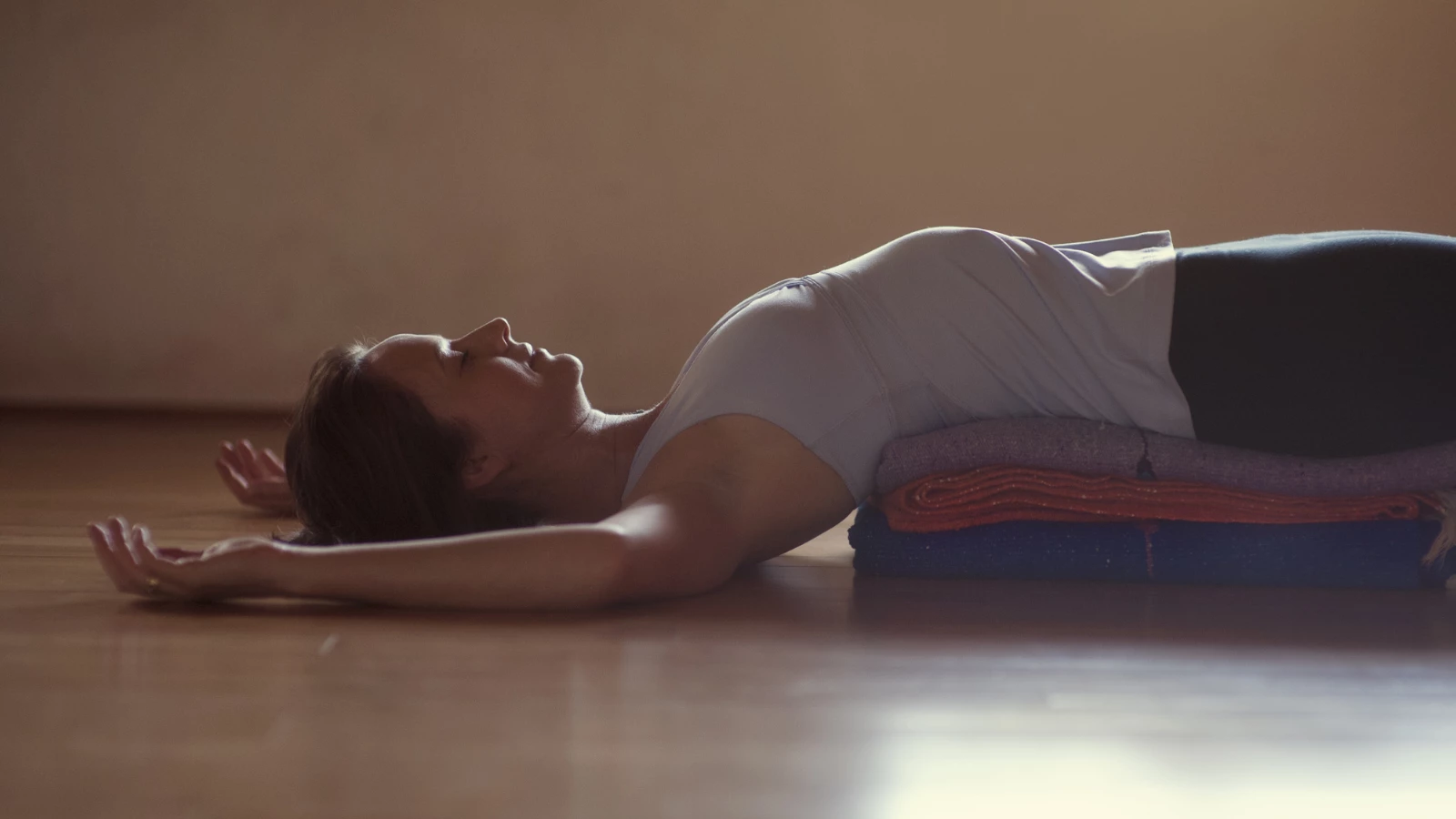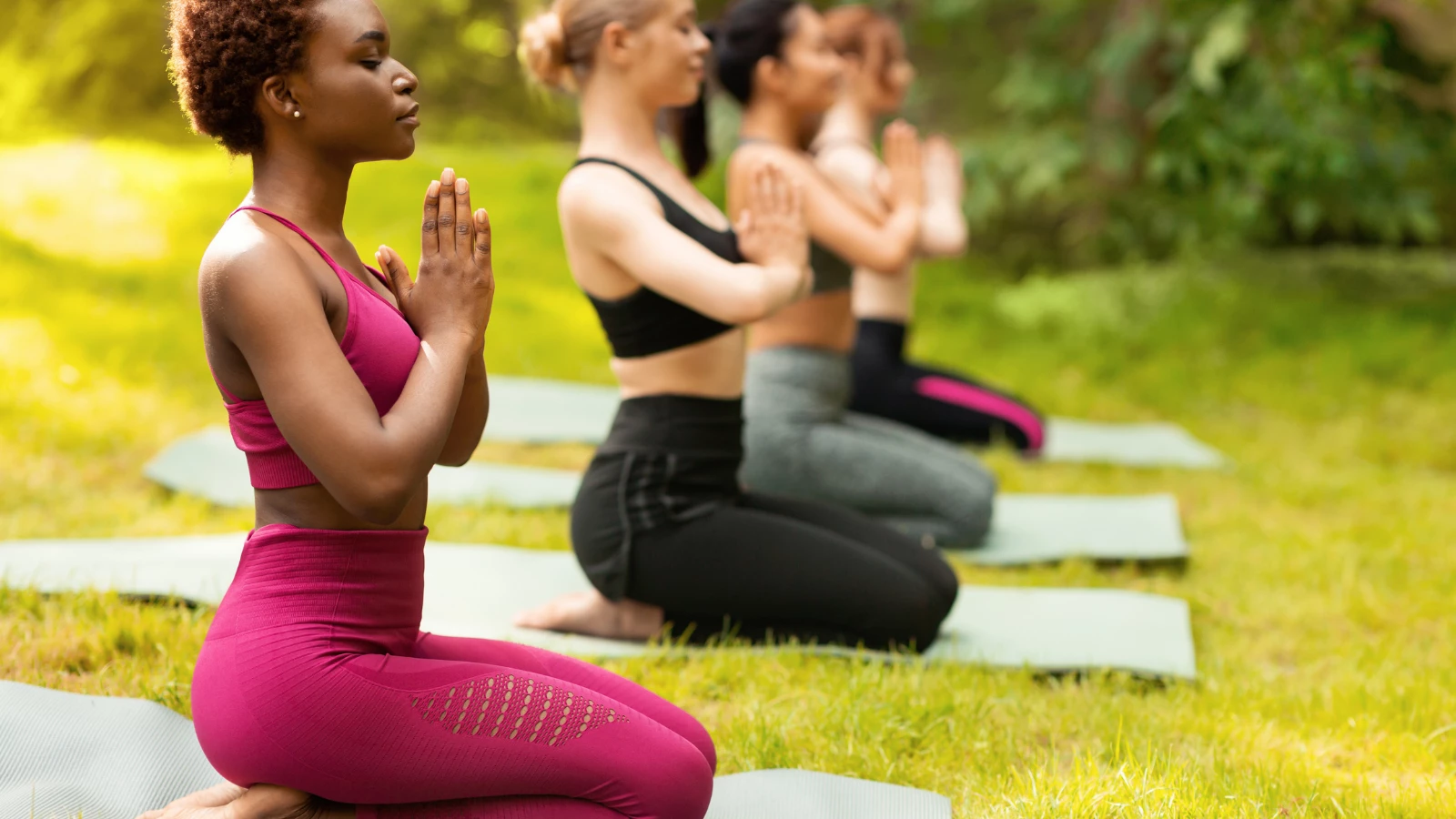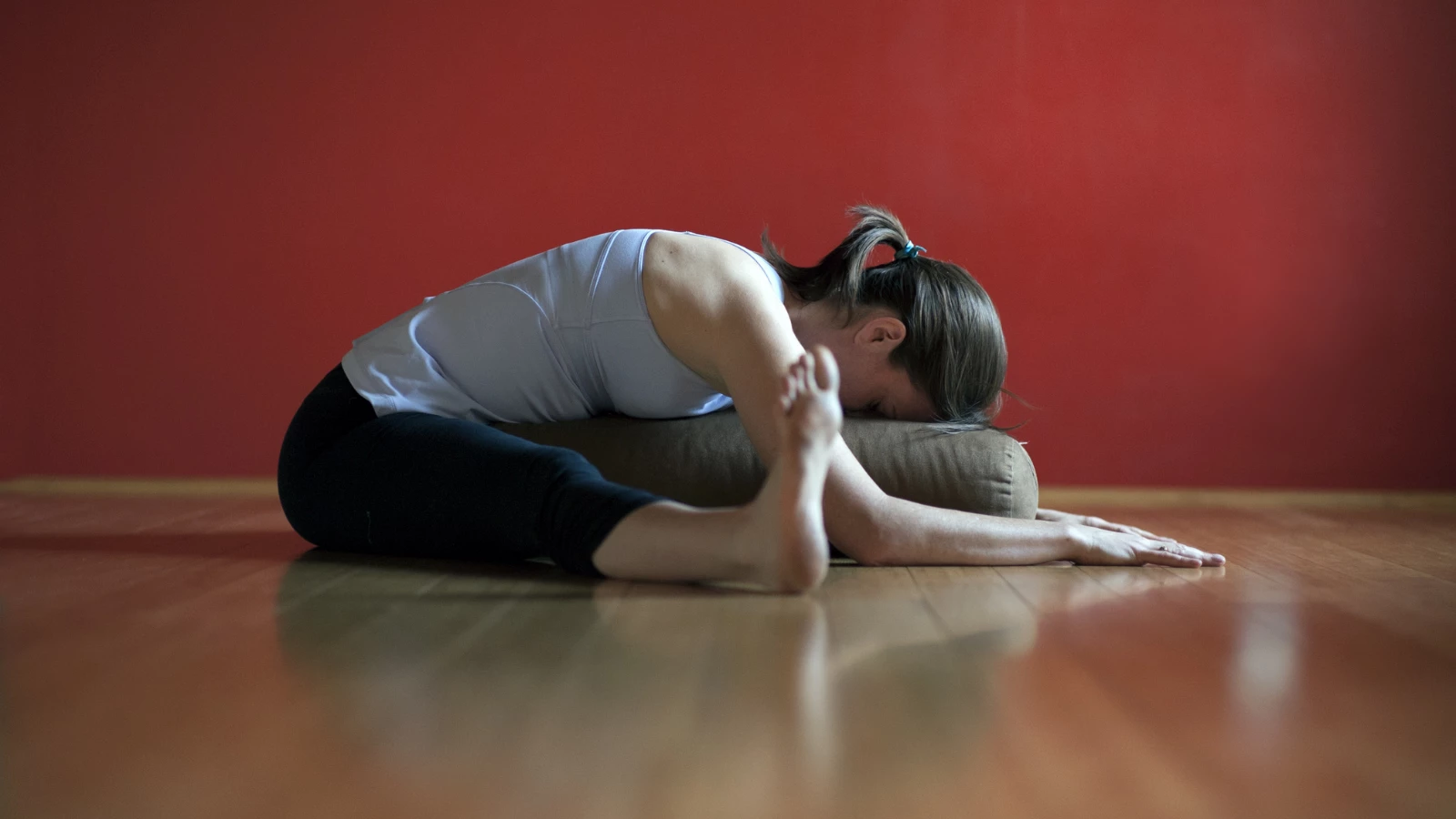Yoga Research: Yoga, Sleep, and the Autonomic Nervous System

What role does the autonomic nervous system (ANS) play in sleep? And how does yoga fit into the picture? This article explores research on the potential for yoga to aid in sleep through improving autonomic nervous system functioning.
Your Body on Sleep
The scientific perspective of sleep has shifted dramatically in the last century. Before the 1950s, sleep was seen as a passive process in which the brain was essentially turned off and the body was idle. Today, however, we understand that sleep is a vital physiological process for both the mind and body.
Sleep sets the stage for a number of biological processes, such as cellular repair, tissue growth, and the production of immune cells. Additionally, during sleep, our brains are also hard at work reorganizing neurons to help with the formation of memory and learning. Although the body may appear dormant, the parts of the mind, including neural networks that regulate the autonomic nervous system, are particularly active (1).
What is the Autonomic Nervous System?

To appreciate the role that yoga may play in regulating sleep, it’s essential to understand the functioning of the autonomic nervous system. The autonomic nervous system is a part of the nervous system that acts mainly unconsciously to regulate vital body functions, such as heart rate, blood pressure, digestion, respiration, and sexual arousal. The autonomic nervous system is divided into two branches: the sympathetic nervous system (SNS) and the parasympathetic nervous system (PNS).
The sympathetic nervous system controls what we commonly refer to as the “fight-or-flight” response. When we think we think we are in danger, the sympathetic nervous system kicks in to increase our heart rate, increase our blood pressure, quicken our breathing, sharpen our senses, divert blood flow from our digestive organs, and increase blood flow to our muscles and vital organs.
In contrast, the parasympathetic nervous system controls what we call the “rest-and-digest” response. When the stressor has passed, the parasympathetic nervous system acts to decrease our heart rate, decrease our blood pressure, slow our breathing, and return blood flow to digestive organs. The parasympathetic nervous system response allows the body to conserve energy and recover. In general, the sympathetic nervous system and parasympathetic nervous system work in harmony to bring our bodies into homeostasis. However, when we are under chronic stress, the sympathetic nervous system can be overactivated.
Stress and the Autonomic Nervous System

In the modern era, rather than being activated by dangers that pose an immediate threat to our lives, sympathetic nervous system activation may most frequently occur in reaction to everyday stressors, such as pressure from work, technostress, and financial uncertainty. Over time, overreaction to these stressors can impact our health. For example, the sympathetic nervous system response of raising our heart rate and blood pressure can eventually damage our blood vessels and place us at a higher risk for heart attack and stroke. Additionally, chronic stress is associated with a variety of physical and mental health problems, including anxiety, depression, digestive problems, and sleep disorders.
The Autonomic Nervous System and Sleep

In particular, researchers have seen a link between chronic stress and insomnia. For example, a study of work stress and insomnia followed Swedish 816 workers and found that stress from a poor psychosocial work environment doubled their risk of developing sleep problems (2). Another study of 115 undergraduates in the United States found that family stress was significantly associated with increased insomnia symptoms, and negative family events together with academic stress predicted the highest levels of insomnia (3).
Although the exact reasoning behind stress’s negative impact on sleep remains to be determined, there is evidence to support the hyperarousal of the nervous system as an underlying driver of insomnia (4). Individuals with insomnia are known to experience hyperarousal and hypervigilance throughout the day and into the night (5). This state of hyperarousal may be caused by overactivation of the sympathetic nervous system combined with low parasympathetic nervous system activity, both of which may occur in individuals who regularly sleep less than six hours per night (1).
Yoga and Sleep

So, what can be done to reduce stress and improve sleep? More research is needed, but there is hope that yoga can help. Researchers have theorized that yoga works through the autonomic nervous system to reduce chronic stress. Specifically, Streeter and colleagues hypothesized that yoga-based practices may correct under activity of the parasympathetic nervous system in part through stimulation of the vagus nerve, which makes up the main pathway of the parasympathetic nervous system (6). The power of yoga in reducing stress and in turn, improving sleep may lie in its ability to elicit a relaxation response, regulate our breathing, and release muscular tension.
Theory and anecdotal evidence for yoga’s positive impact on sleep may be strong. Nonetheless, current research on yoga and sleep remains limited. Among the data that does exist, one U.S. national survey of complementary health approaches found that 85 percent of individuals who practiced yoga regularly said that it helped reduce stress and 55 percent said that it helped to improve their sleep (7). Another cross-sectional study of 65 elderly people living in India found that sleep quality was significantly higher in the group that regularly practiced yoga compared to the group that did not (8).
Recommendations

It is clear that much more rigorous research is needed on yoga’s clinical implications on sleep and on the exact mechanisms of yoga’s impact on sleep. However, there are plausible theories that suggest that yoga may improve sleep quality by regulating the autonomic nervous system. While there is currently very little scientific evidence of the types of yoga that might be best to improve sleep, long-time yoga practitioners and teachers may have an idea of what practices seem to work best for them.
For example, it seems logical that vigorous yoga practices, such as Power Yoga, Adho Mukha Vrksasana (Handstand Pose), arm balances, and Kumbhaka (Breath of Fire), may activate the sympathetic nervous system. Some might find these practices might be too energizing late in the evening. On the other hand, calming, quieting practices, such as restorative yoga, slow breathing, and guided meditation might activate the parasympathetic nervous system. Thus, these practices might be worth trying to prime oneself into a relaxed state for a peaceful night’s sleep.
Also, read...
Do Yoga and Meditation Reduce Health-Care Utilization? What Studies Say
Jun 30 – By: B Grace Bullock, PhD, E-RYT 500
Age-Related Posture Slump? Yoga Can Help Alleviate Hyperkyphosis, Study Suggests
Jun 29 – Eve Johnson
How Exercise Might Help Brain and Nervous System Health
Feb 20 – Nina Zolotow, RYT 500
Related courses
Breath as Medicine: Yogic Breathing for Vital Aging
With Doug Keller
Yoga and Myofascial Release: Releasing Chronic Tension with the Bodymind Ballwork Method
With Ellen Saltonstall
Yoga and Detoxification: Tips for Stimulating Lymphatic Health
With Lisa Levitt Gainsley

Lacey Ramirez writes for YogaUOnline and is an RYT-500 & ERYT-200 yoga teacher, global health researcher, and writer based in St. Louis. Through her work, she seeks to make yoga accessible, inclusive, and equitable.
Lacey discovered yoga as a tool for centering during her years as a competitive runner. Since then, yoga has served as a way to connect with her body throughout her experience of pregnancy and parenthood. She teaches because she hopes others can use this sacred practice for calming, healing, and transformation.
As a yoga teacher, Lacey specializes in teaching restorative, Yin, prenatal, and trauma-informed Vinyasa yoga. She has also completed birth doula and prenatal/postnatal barre certifications and trainings. Additionally, she holds a Masters of Science in Global Health and Population from Harvard T.H. Chan School of Public Health. To learn more and connect, visit her website laceyramirez.com
References
- Fink, A. M., Bronas, U. G., & Calik, M. W. (2018). Autonomic regulation during sleep and wakefulness: a review with implications for defining the pathophysiology of neurological disorders. Clinical Autonomic Research, 28(6), 509-518. Retrieved from https://www.ncbi.nlm.nih.gov/pmc/articles/PMC6542468/
- Linton, S. J. (2004). Does work stress predict insomnia? A prospective study. British Journal of Health Psychology, 9(Pt 2):127-36. Retrieved from https://www.ncbi.nlm.nih.gov/pubmed/15125800
- Bernert, R. A., Merrill, K. A., Braithwaite, S. R., Van Orden, K. A., & Joiner, T. E. Jr. (2007). Family life stress and insomnia symptoms in a prospective evaluation of young adults. Journal of Family Psychology, 21(1):58-66. Retrieved from https://www.ncbi.nlm.nih.gov/pubmed/17371110
- Roth, T. (2007). Insomnia: Definition, prevalence, etiology, and consequences. Journal of Clinical Sleep Medicine, 3(5 Suppl): S7–S10. Retrieved from https://www.ncbi.nlm.nih.gov/pmc/articles/PMC1978319/
- Bonnet, M. H., & Arand, D. L. (2010). Hyperarousal and insomnia: State of the science. Sleep Medicine Reviews, 14(1):9-15. Retrieved from https://www.ncbi.nlm.nih.gov/pubmed/19640748
- Streeter, C. C., Gerbarg, P. L., Saper, R. B., Ciraulo, D. A., & Brown, R. P. (2012). Effects of yoga on the autonomic nervous system, gamma-aminobutyric-acid, and allostasis in epilepsy, depression, and post-traumatic stress disorder. Medical Hypotheses, 78(5), 571-579. Retrieved from https://www.ncbi.nlm.nih.gov/pubmed/22365651
- Stussman, B. J., Black, L. I., Barnes, P. M., Clarke, T. C., Nahin, R. L. (2015). Wellness-related use of common complementary health approaches among adults: United States, 2012. National health statistics reports; no 85. Hyattsville, MD: National Center for Health Statistics. 2015. [402KB PDF]: https://www.nccih.nih.gov/research/wellness-related-use-of-common-complementary-health-approaches-among-adults-united-states-2012
- Bankar, M. A., Chaudhari, S. K., & Chaudhari, K. D. (2013). Impact of long term Yoga practice on sleep quality and quality of life in the elderly. Journal of Ayurvedic and Integrative Medicine, 4(1): 28–32. Retrieved from https://www.ncbi.nlm.nih.gov/pmc/articles/PMC3667430/
Recent articles
Fascia and the Vagus Nerve: Healing from the Inside Out
Jul 10 – Dr. Arielle Schwartz
Change Your Perspective of Pelvic Tilting: How the Transversus Abdominis Can Help
Jul 08 – Olga Kabel C-IAYT
Warrior I Pose: 5 Strengthening Variations
Jul 02 – Bridget Frederick, eRYT 500
Categories
Upcoming courses
Breath as Medicine: Yogic Breathing for Vital Aging
With Doug Keller
Yoga and Myofascial Release: Releasing Chronic Tension with the Bodymind Ballwork Method
With Ellen Saltonstall
JOIN NOW!
Recent articles
Almost there...
Sorry, we couldn't find anything...
Stress Relief
Fascia and the Vagus Nerve: Healing from the Inside Out
Have you ever had a morning in which you woke up with a painful…
Jul 10 – Dr. Arielle Schwartz
Pose Library
Change Your Perspective of Pelvic Tilting: How the Transversus Abdominis Can Help
“Tuck your tailbone under” or “lengthen your tailbone” have long been among the most…
Jul 08 – Olga Kabel C-IAYT
Yoga Practice Tips
Warrior I Pose: 5 Strengthening Variations
Warrior I Pose (Virabhadrasana I) is an excellent pose for strengthening your whole back…
Jul 02 – Bridget Frederick, eRYT 500




